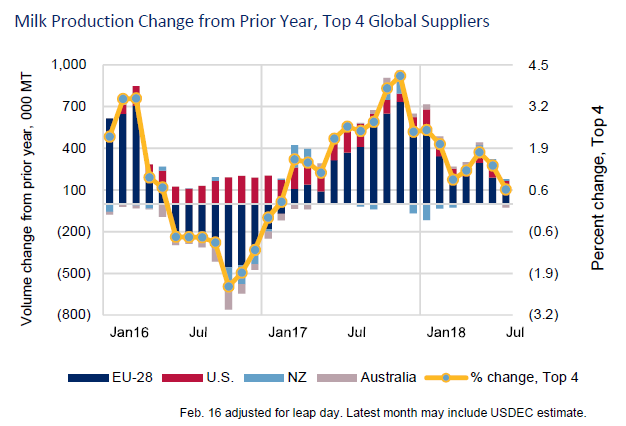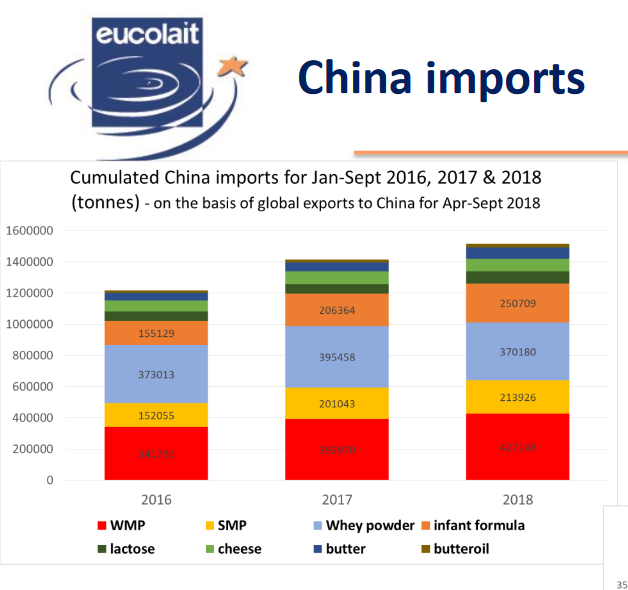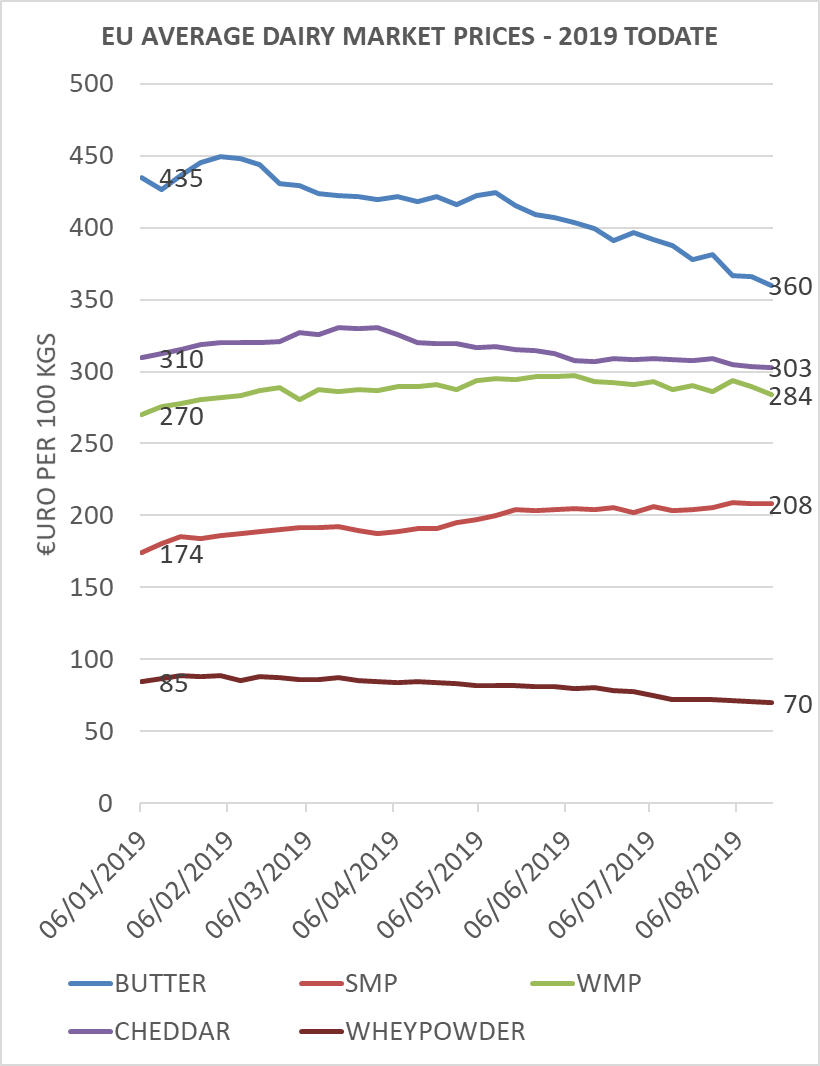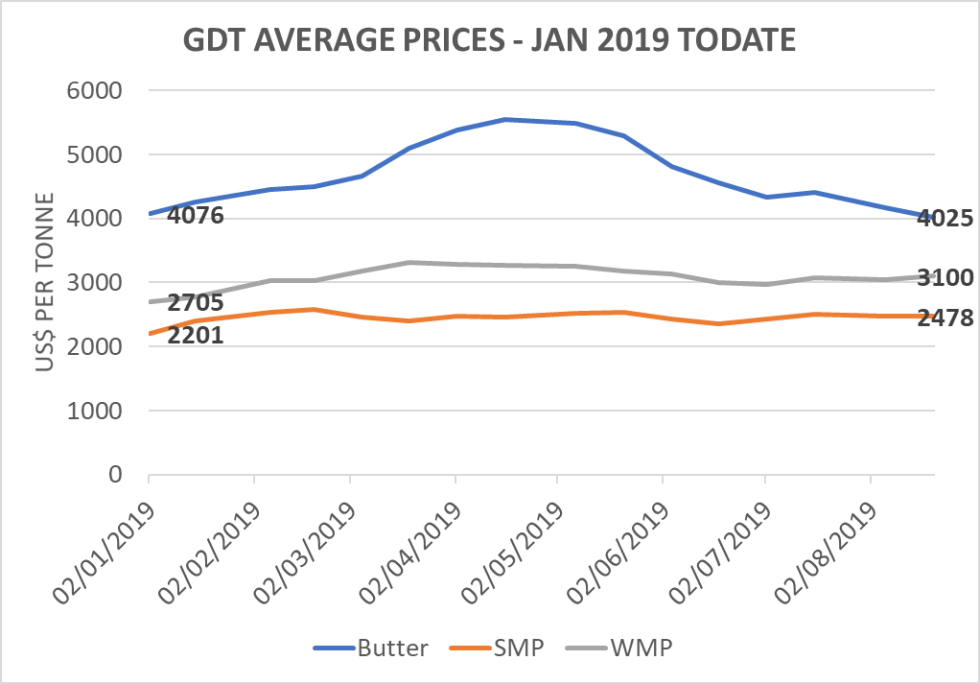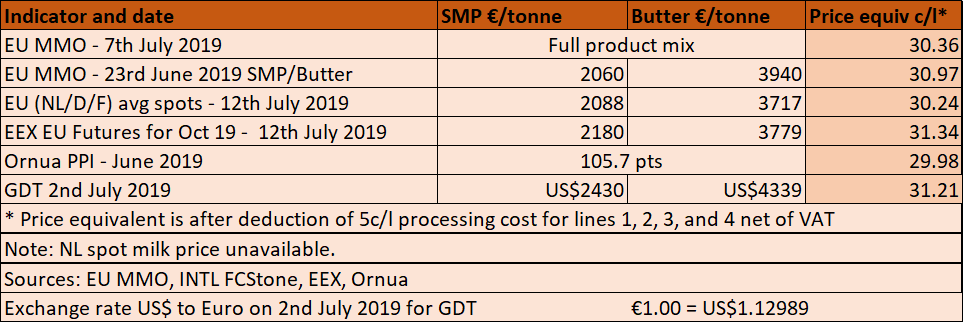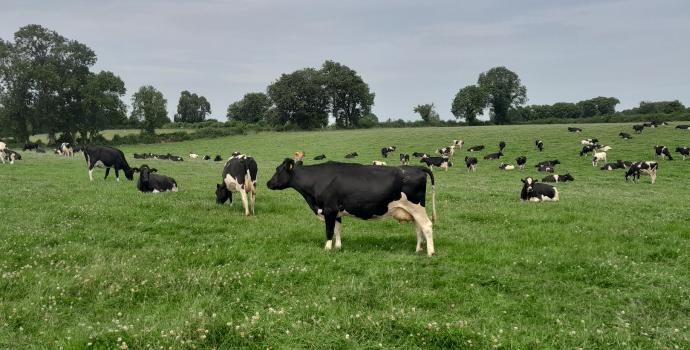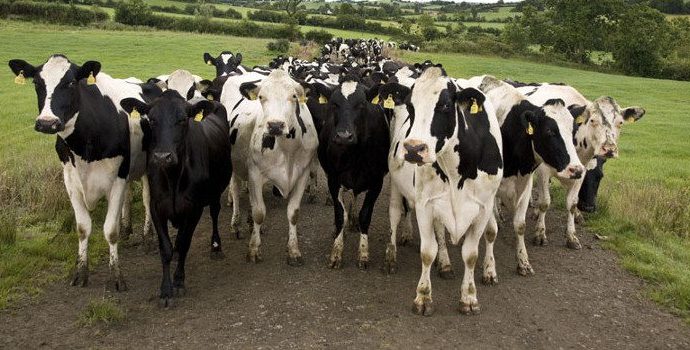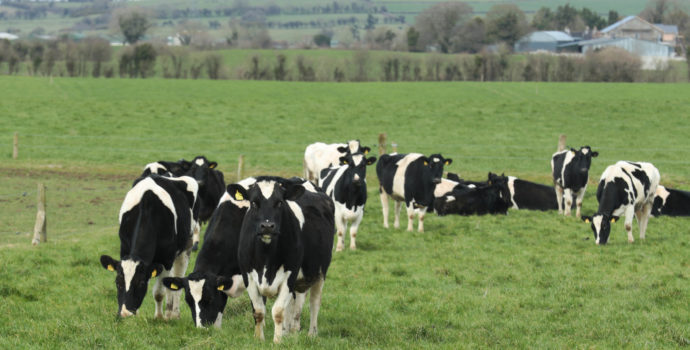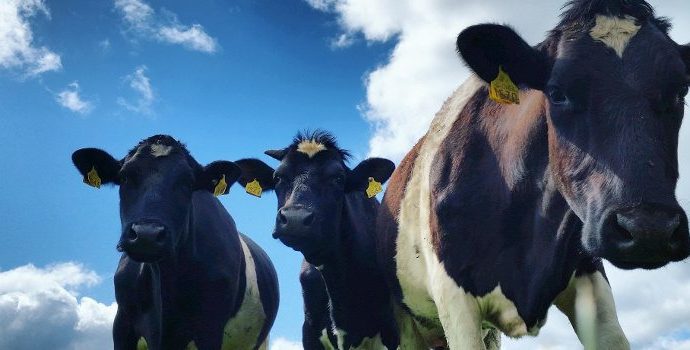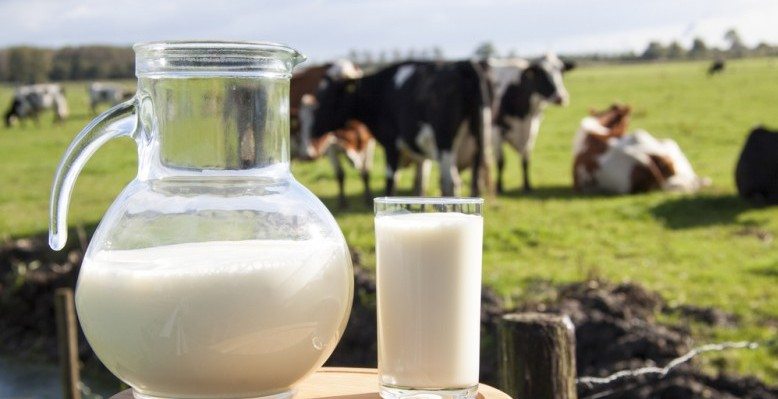
Supply growth remains subdued, but nervous sentiments impacts prices
It’s a bit of a broken record among dairy market analysts: milk output growth globally has remained very subdued – which should underpin better dairy prices – yet markets are sluggish with easier butter prices the main characteristic.
Global milk production is actually down, estimated at -0.4% for Jan to June, with weak supplies in the US, Australia and South America. The new 2019/2020 NZ season looks set for a strong start, with June supplies up around 13% in milk solids terms. However, June is the trough month, and in 2018 accounted for less than 1% of milk solids production for the full year.
EU production is only very modestly up (only +0.4% for Jan-June), but hides differing trends. Hence, France’s negative production trend remains negative, but less so, while German production, rising in the first quarter, has been falling every month since. Dutch milk output continues down (-2.7%) as last year’s herd reduction scheme continues to impact. Between them, these 3 countries account for around 45% of all EU milk production.
Other countries expanded production, not least Ireland, +10% for the Jan to June period, the UK (+3%) and while Poland had been growing its production fast up till now, it has just registered it first negative since late 2016 in June, down 0.5% compared to the same month last year.
The main problem comes from demand-side factors.
Weaker economic growth
Global economic growth has been easing for some months now, with particular reports from the Eurozone, the US and China. The IMF has for some time been flagging its concerns about a possible global recession, urging the US and China to resolve their trade skirmishes, and have now reduced their growth forecasts for 2019 and 2020.
Global dairy demand is a mixed bag
In simple terms, demand is more buoyant in (some) developing countries than in the developed world. Hence, demand is relatively sluggish in the EU, while it is reported strong to very strong in Asia (including China).
Chinese imports, which had been growing in volume since last October, marked a beat in May, to recover slightly in June.
Year to date (June) volumes have increased very significantly, especially for certain products. WMP imports have risen 29%, while SMP went up 28.4%. Infant formulae imports were also well up, at 14.6%. Bulk and packed milk was up a whopping 32%, while cream rose 53% and condensed milk 39%, albeit the last two from much smaller volumes.
On the other hand, demand in Africa and the Middle East continues to struggle. African demand for Jan-June is reported down 10%, although this does not include FFMP (fat filled milk powder or enriched milk powder) which is comfortably offsetting the fall.
Middle eastern demand, after a negative period, is believed to be on the way back up.
Oil price revenues, despite OPEC’s best efforts, have been hampered by crude oil prices remaining around $60/barrell. For many Middle Eastern and some African countries, these are crucial revenues to finance food, including dairy, imports.
More positively, lower priced butter is now more affordable, and there are reports that this is starting to impact positively on some markets.
Geopolitical uncertainties
These are probably the main factors affecting both the global economic expectations and the market sentiments.
Brexit is the obvious and most immediate one. Much has been said about the (already being felt) impact of Brexit on beef markets and prices. But dairy markets, especially Irish dairy exports, are also very dependent on the UK – we have documented this in the initial IFA Brexit document back in March 2017, and you can check the facts and figures here.
Trade disputes between the US and the EU (Airbus v Boeing, and the imposition of import tariffs by the US including on EU dairy products), between the US and China (again, mutual imposition of import tariffs, which have led to serious implications for US farmers, and have given rise to the need for the US to spend a reported $16bn in farmer trade aids) are also causing major disruption in world trade. The uncertainty this creates for the ability to trade any commodity is damaging all markets, including dairy markets.
Finally, a number of countries with sizeable populations and potential large markets for dairy imports are affected by wars and conflicts – e.g. Iran and much of the rest of the Middle East.
So, what impact on dairy prices?
EU dairy prices are a tale of 2 trends: improving powder prices and easing butter, cheese and whey prices.
Since January, average butter prices as reported by the EU MMO have decreased by €750/tonne, while whey powder has come down €150/t which is 17% to 18% in both cases.
Cheddar cheese prices have been relatively stable, by comparison, with a fall of only €70/t or 2.2%.
Meanwhile, WMP is now €140/t higher than it was in early January – that is 5.2% higher; and SMP prices have gone up €340/t, a spectacular increase of 19.5%.
GDT trends over the same period have been similar for powders, with a steady, if greater (WMP) and lower (SMP) price improvement than EU quotes have shown. Whole milk powder (WMP) remains the product the most traded through GDT, as has been the trend from the very beginning.
Butter prices are not dramatically changed from early this year ($50 less per tonne), but this is after a major uplift from March to June.
Returns continue to ease – but remain above Irish milk prices!
Returns from dairy product are measured through a number of indicators.
Most directly relevant to Irish co-ops, because it reflects what they trade through Ornua, is the Ornua Product Purchasing Index (PPI).
Just like Irish milk prices, the Ornua PPI is announced in retrospect, and reflects returns for a basket of product traded the month prior to its publication.
For July trade, the Ornua PPI fell by 1.7 points to 104 points. This was calculated by Ornua to be equivalent to a milk price of 29.31c/l + VAT (30.9c/l incl. VAT). This is 1.4c/l more than Glanbia are paying for July milk, at 29.5c/l incl VAT. As we have shown in previous blogs, only the West Cork co-ops have consistently exceeded the Ornua PPI returns in their milk prices over the last 10 months. The other payers have undershot the PPI for the majority of the last 10 months, with Lakeland Dairies coming closest to it. In July, though, it appears the gap has widened further: with the exception of Lakeland, who cut by ½ a cent, all other milk purchasers have cut their price by 1c/l, when the PPI equivalent only fell by 0.67c/l.
Other indicators (see table right) have continued to ease, but remain equivalent to milk prices before VAT of between 29c/l and 31c/l (30.6 to 32.7c/l incl VAT).
It would seem most Irish co-ops who wish to sustain their suppliers precious confidence have scope to hold prices for another while!
CL/IFA/23rd August 2019

